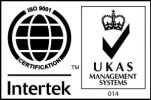ANTIMICROBIAL / ANTIBACTERIAL / ANTI-MOULD plastics
Antimicrobial Plastics Masterbatches & compounds that reduce the growth of bacteria & mould Employing a range of proven antimicrobial additives from leading suppliers, we can provide [...]
Antimicrobial Plastics Masterbatches & compounds that reduce the growth of bacteria & mould Employing a range of proven antimicrobial additives from leading suppliers, we can provide [...]
There is no excerpt because this is a protected post.
Technical articles Modular conveyor systems Modular conveyor belts are manufactured from many interlocking elements, connected together using rods. They are particularly useful in systems [...]
QUALITY Customer service & product performance are at the heart of what we do. Product performance Rigorous testing ensures that the products we design and supply perform exactly to our [...]
AirSential® Additives & masterbatches for the capture of harmful VOCs and malodours Why use Odour and VOC capture technologies? The off gassing of malodours and harmful VOCs from materials [...]
Polymer foreign body detection in the food processing industry SCOPIC TECHNICAL Foreign body contamination in food products is a major area of concern for food processors/manufacturers. Examples [...]
Material Testing & Analysis Challenging materials to ensure optimum performance Understanding the effect of functional additives on material properties It is important to recognise that there [...]
CUSTOM PRODUCT DEVELOPMENT Viverra ipsum nunc aliquet bibendum enim facilisis gravida. Faucibus vitae aliquet nec ullamcorper sit amet risus. Thermal management, electrical conductivity/static [...]
SCOPIC® Metal and X-ray detectable plastic, silicone & rubber compounds & masterbatches Metal and X-ray detectable polymers are commonly supplied to converters/OEM’s and subsequently [...]
KONDUCT® Thermally/electrically conductive and EMI/RFI shielding compounds, masterbatches and additives Thermal management, electrical conductivity/static dissipation and shielding solutions [...]
Radical Materials Ltd
Unit 10, Rassau Industrial Estate, Ebbw Vale, Gwent NP23 5SD, United Kingdom
+44 (0) 1495 211400 info@radicalmaterials.com
SCOPIC® & KONDUCT® are registered trademarks of Radical Materials Ltd. AIRSENTIAL® is a registered trademark of Radical IP Ltd.
Radical Materials is presently working on a project aimed at developing performance polymer compounds to provide EMI/RFI shielding solutions in moulding/extrusion applications. This project is being undertaken with financial support from the ERDF via the SMARTCymru 2014-2020 West Wales and the Valleys Operational Programme.




